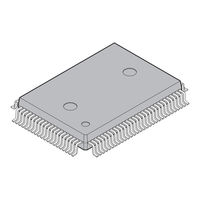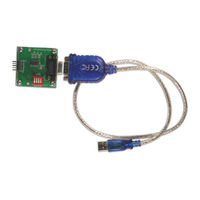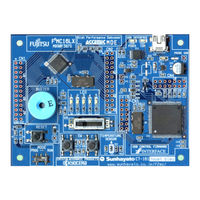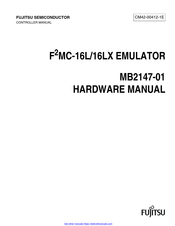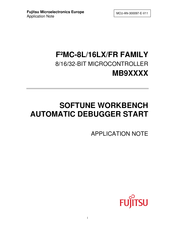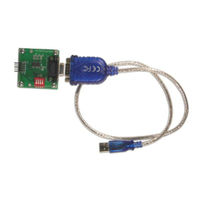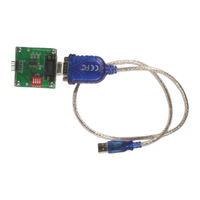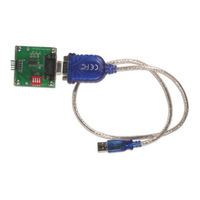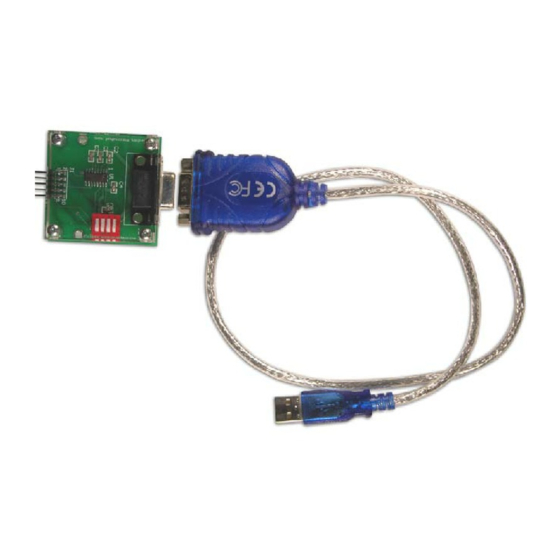
Fujitsu F2MC-16LX Series Manuals
Manuals and User Guides for Fujitsu F2MC-16LX Series. We have 15 Fujitsu F2MC-16LX Series manuals available for free PDF download: Hardware Manual, Operation Manual, Application Note, User Manual
Fujitsu F2MC-16LX Series Hardware Manual (724 pages)
16-BIT MICROCONTROLLER
Brand: Fujitsu
|
Category: Microcontrollers
|
Size: 6 MB
Table of Contents
Advertisement
Fujitsu F2MC-16LX Series Hardware Manual (706 pages)
16-bit Microcontroller MB90330 series
Brand: Fujitsu
|
Category: Microcontrollers
|
Size: 13 MB
Table of Contents
Fujitsu F2MC-16LX Series Hardware Manual (710 pages)
16 Bit, Controller Manual
Brand: Fujitsu
|
Category: Microcontrollers
|
Size: 12 MB
Table of Contents
Advertisement
Fujitsu F2MC-16LX Series Hardware Manual (658 pages)
16-BIT MICROCONTROLLER
Brand: Fujitsu
|
Category: Microcontrollers
|
Size: 9 MB
Table of Contents
Fujitsu F2MC-16LX Series Hardware Manual (395 pages)
16-Bit Microcontrollers
Brand: Fujitsu
|
Category: Microcontrollers
|
Size: 3 MB
Table of Contents
Fujitsu F2MC-16LX Series Hardware Manual (635 pages)
16-BIT MICROCONTROLLER
Brand: Fujitsu
|
Category: Microcontrollers
|
Size: 7 MB
Table of Contents
Fujitsu F2MC-16LX Series Hardware Manual (598 pages)
MB90470 Series 16-BIT MICROCONTROLLER
Brand: Fujitsu
|
Category: Microcontrollers
|
Size: 16 MB
Table of Contents
Fujitsu F2MC-16LX Series Hardware Manual (486 pages)
MB90550A/B Series, 16-BIT
Brand: Fujitsu
|
Category: Microcontrollers
|
Size: 7 MB
Table of Contents
Fujitsu F2MC-16LX Series Hardware Manual (66 pages)
EMULATOR
Brand: Fujitsu
|
Category: Microcontrollers
|
Size: 0 MB
Table of Contents
Fujitsu F2MC-16LX Series Application Note (23 pages)
Brand: Fujitsu
|
Category: Microcontrollers
|
Size: 1 MB
Table of Contents
Fujitsu F2MC-16LX Series Application Note (14 pages)
Brand: Fujitsu
|
Category: Microcontrollers
|
Size: 0 MB
Table of Contents
Fujitsu F2MC-16LX Series Operation Manual (26 pages)
Brand: Fujitsu
|
Category: Computer Hardware
|
Size: 0 MB
Table of Contents
Fujitsu F2MC-16LX Series Application Note (13 pages)
Brand: Fujitsu
|
Category: Microcontrollers
|
Size: 0 MB
Table of Contents
Fujitsu F2MC-16LX Series User Manual (14 pages)
PC Serial Programming Adapter Cable for Fujitsu Flash Microcontroller-F²MC-16LX/FR Family
Brand: Fujitsu
|
Category: Computer Hardware
|
Size: 0 MB
Fujitsu F2MC-16LX Series Operation Manual (10 pages)
LQFP-48P PROBE CABLE (NQPACK VERSION)
Brand: Fujitsu
|
Category: Microcontrollers
|
Size: 0 MB
Advertisement
